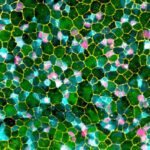Link to Pubmed [PMID] – 18331883
Brain Res. Bull. 2008 Mar;75(2-4):266-73
The maintenance of progenitor cells is a crucial aspect of central nervous system development and maturation, and bHLH transcription factors of the E(Spl) subfamily are involved in this process in all vertebrates studied to date. In the zebrafish embryonic neural plate, a large number of E(Spl) genes (her genes) are at play. We review recent data on this point, and propose a model where distinct subsets of these genes define different progenitor subtypes. Analysis of her genes expression in the adult zebrafish brain suggests that part of the embryonic her cascade might also be reused to define progenitors during adulthood. Further, available evidence on orthologous genes in the mouse (Hes genes) point to different modes of Hes regulation depending on cell location within the embryonic neural tube, perhaps associated with distinct progenitor types in this species as well. Out of these comparisons emerges a simple model of neural stem cell maintenance applicable from embryonic development until adulthood as well as across species. This working model suggests the directions for future experiments.

